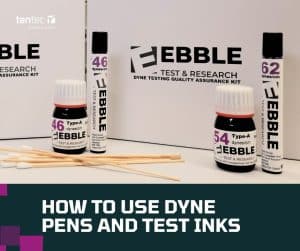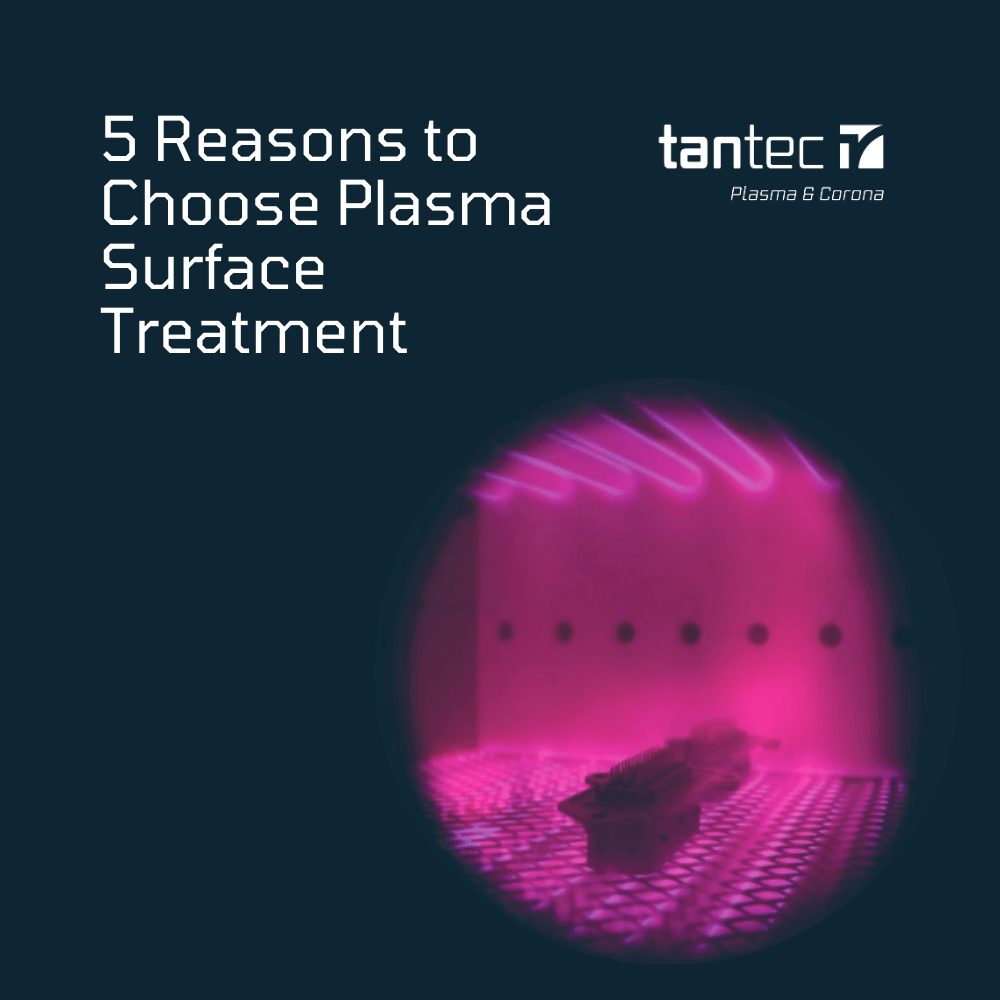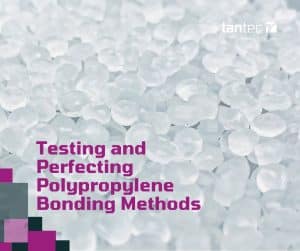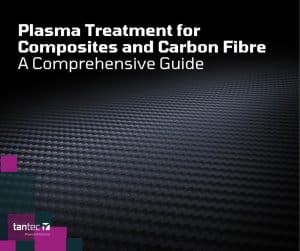
How to use Dyne Pens and Test Inks
Read this to find out the official way to get

Plasma surface treatment is just one of many different surface treatment solutions available to prepare or optimise substrates for bonding, printing or coating. Here at Tantec UK & Ireland we give our top 5 reasons to choose plasma over alternative processes:
1. Plasma Surface Treatment is a high-performance process
Plasma surface treatment can offer greater increases in adhesion performance than alternative processes such as abrasion or chemical etching.
Abrading or etching the surface adds texture to the surface of the substrate, increasing the surface area giving the adhesive, ink or other coating a larger area to bond too. However; if the substrate isn’t wettable or chemically reactive, this is not going to significantly increase the adhesion between the substrate and the liquid.
Plasma surface treatment actually modifies the surface of the substrate at a molecular level both increasing the surface energy of the substrate which in turn increases liquid wettability and leaving behind new chemically reactive bonding sites for the adhesive, ink or other coating to adhere to.
It is important to note that plasma surface treatment modifies the surface at a molecular level and unlike abrasion or etching it does not affect the bulk properties of the substrate making it suitable for even the most delicate of substrates.
2. A Highly Versatile Process
Plasma surface treatment is compatible with a diverse range of substrates including polymers, rubbers, metals, fabrics, glass, ceramics and even delicate electronic components.
With lightweighting (vehicle weight reduction) being increasingly adopted by the automotive and motorsports industries the requirement to be able to bond dissimilar materials, metal to plastic for example is becoming more of a necessity. However, bonding dissimilar substrates is difficult as different substrates have different surface energies and chemical makeups on the surface thus requiring different adhesives.
Treating both substrates with plasma essentially harmonises the surfaces of both substrates increasing the surface energy of both and creating the same chemically reactive bonding sites for the adhesive to bond to.
3. A Highly Repeatable Process
Plasma surface treatment is a highly controlled and repeatable process which provides a uniform treatment of the substrate with minimal operator intervention.
Atmospheric plasma surface treatment systems are typically automated and are either mounted on a robot or alongside a conveyor so that the key parameters- distance of the plasma discharge from the substrate and the speed of the plasma discharge over the substrate are closely controlled.
Vacuum plasma surface treatment can offer even greater repeatability as the vacuum plasma treatment is performed in a sealed vacuum chamber and is thus protected from any external influences such as airborne contamination.
Alternative processes such as wet chemical cleaning, primers and abrasion are more susceptible to variability in technique and external influences- chemical dilution and contamination and primer coverage or drying time for example.
4. Plasma Surface Treatment is an Economical Process
The treatment offers low running costs, consuming only small amounts of electricity and compressed air and using no expensive wet chemical consumables.
Removing chemicals or primers from your manufacturing process provides a number of cost reductions:
Reduced processing/ production times.
No drying or curing is needed following plasma surface treatment allowing the treatment to be performed inline and the substrate processed immediately after treatment.
No expensive consumables and no wastage
Plasma surface treatment consumes only electricity and dry, clean compressed air. No expensive consumables are required.
Alternative processes such as chemical etching or priming consumes large amounts of expensive chemicals and creates large amounts of hazardous waste which are expensive to dispose of.
Chemicals and primers have expiry dates after which the performance of the product cannot be guaranteed. If stock levels aren’t closely controlled then this can result in further wastage.
Lower cost base substrates
Plasma surface treatment gives you the opportunity to work with alternative, lower cost substrates.
The automotive industry in particular has seen a real push towards the use of polymers and composites in car manufacture in order to produce lighter and more fuel efficient vehicles.
These polymers and composites have a very low surface energy and can be very difficult to bond to. Treating polymers and composites with plasma increases the surface energy and creates the chemically reactive bonding sites required for the strong adhesion of glues, paints and other liquid coatings.
Plasma treated substrates can be re-treated if required
Plasma surface treatment has a treatment life. This varies depending on the substrate and can range from a matter of hours to weeks or even months.
Should the treated substrate not be processed within this time frame it can simply be re-treated at a later date.
5. An Operator and Environmentally Friendly Process
Surface treatment is a clean, dry and safe process generating only low volumes of non-toxic gasses which can be easily filtered or safely vented to atmosphere.
No open flames or hazardous chemicals which can be harmful to both the operator and the environment and expensive to dispose of are involved.

Read this to find out the official way to get

Polypropylene (PP) bonding is traditionally a difficult task due to

Composites are becoming increasingly important in manufacturing, whether these are
40A Crossgate Road
Park Farm Industrial Estate
Redditch
B98 7SN
Tel: 01527 304 004
Email: info@tantec-uk.com
